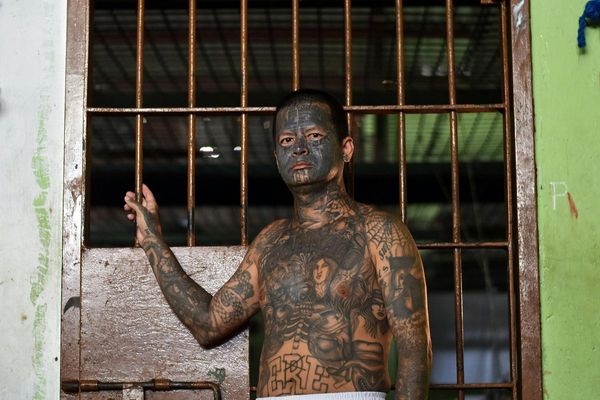
After four vicious storms in as many weeks and the worst drought in 40 years, there are fears that the hunger crisis facing 2 million people in southern Madagascar could become a famine. With record low rainfalls in the Grand Sud region, USAid’s Famine Early Warning Network is warning that large-scale humanitarian support will be needed until next year.
Food shortages have been compounded by three cyclones and one tropical storm that have ravaged parts of the south and east of the country since late January. The most recent hit the south-east coast on 22 February, affecting thousands of people.
Among them is Vokasoa Origin, 24, who walked 11 miles (17km) overnight to reach a mobile clinic in Elomaka village in Amboasary Sud district, to collect emergency supplements for her seven-year-old daughter, Bakoly.
At home, her husband and their two other children forage for food – mostly cactus fruits. Their last two harvests have been destroyed by drought.
“Our situation is tough, especially when our crop fails,” says Origin. “I wanted to give another life to my children.”
The mobile clinic, run by Médecins Sans Frontières, visits Elomaka twice a month to distribute food supplements to children.

The UN children’s agency, Unicef, estimates that 500,000 children under five will be acutely malnourished this year and about 110,000 will be severely malnourished.
On a sweltering day last week, about 100 children lined up with their parents waiting to be seen by medical staff.
Against the odds, Bakoly is the only one of Origin’s children who meets the threshold for food relief. “At least now she does not have to be hungry,” says Origin.
In Ambovombe district, Dr Higor Rodrigues Machado oversees a packed clinic and feeding centre.

“In many villages, one child out of 10 dies due to respiratory diseases and diarrhoea. Infants coming here don’t know how to eat. They lack the reflexes and have to be taught,” says Machado, the head doctor at the clinic, run by the NGO Fraternity Without Borders.
Toendrazae Emiliene brought her one-month-old son, Mahasolo Philibert, to the clinic three weeks ago because she was unable to produce milk to feed him.
“In the beginning, when we were here, I thought my son would die,” says Emiliene.
Emiliene’s mother, Claudine, sitting next to her daughter in the clinic, praises God that Mahasolo is getting better now he has been given baby formula.
Claudine says their problems began about five years ago. “We got less rain and sandstorms came more often. Then I was a rich woman.
“Today it is difficult. If there was no help with food, we would have died,” she says.

Unpredictable rain has been a problem for as long as people can remember. But now deforestation – 80% of Madagascar’s original rainforest has been cut down – and soil degradation are leading to a problem that some consider worse than drought: dust and sandstorms known as Tiomena (red wind) that are exacerbating the crisis in the far south by smothering crops, forests, buildings and roads.
The wind “destroys everything”, says Dominique Raherinidamy, a leader of Zambey Abkilidonga village, in Amboasary Sud. “We prefer the drought instead of the red wind.
“People have left the village to go east in order to survive, although this is ancestral land where we have always stayed,” he says.
These violent sandstorms can arrive three or four times a month, burying fields under a thick layer of sand and ruining crops, he says. Once the sand has covered the farms, it is difficult to use the land again for further planting as all the sand has to be removed manually.
The UN’s Food and Agriculture Organization (FAO) is attempting to address the crisis with projects to protect farmland in the Grand Sud region.
“A part of the solution to this situation is access to water, higher-quality seeds and protection of the farmlands,” says Mattias Ravelondralambo, a regional environmental manager for FAO.
In three years, Ambondro village in Ambovombe district has been transformed from a barren, dusty landscape, weathered by sandstorms, into a green oasis, thanks to a new well and drought-resistant crops planted behind rows of bushes and trees that form a natural barrier of protection.

“Some years ago, we starved here, especially 2006, but now we can survive, even with little and no rain. And the sandstorms don’t affect our lives as much as before,” says Mamonjeazye, leader of a co-operative farm in the village.
But for Origin and Bakoly, there is little to do but hope the March rains come and the family can harvest the last of their cassava crop.
“It is terrible as a mother to not be able to feed your children,” says Origin, before starting the long walk back home from Elomaka in the scorching sun.
Sign up for a different view with our Global Dispatch newsletter – a roundup of our top stories from around the world, recommended reads, and thoughts from our team on key development and human rights issues, delivered to your inbox every two weeks:







